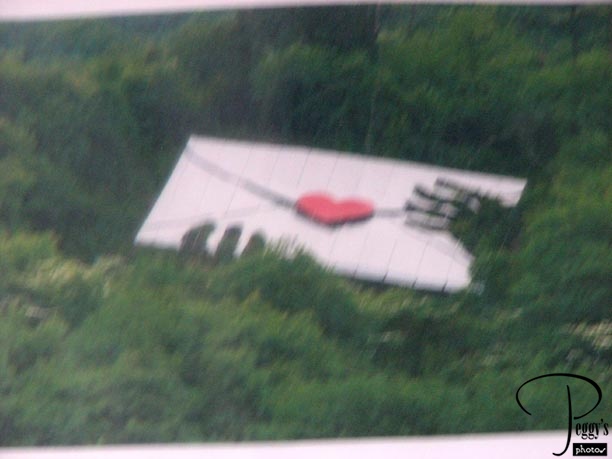Mt. Fuji Trip
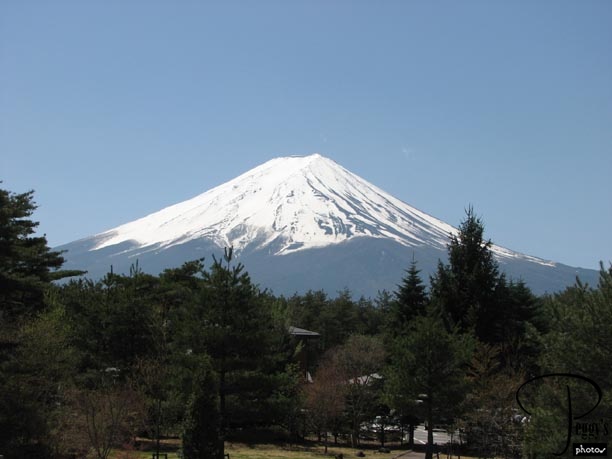
Today, I took another Sunrise Tour to Mt. Fuji and to Lake Ashi. My new friend Lynn from Australia and I were looking forward to both being on this tour. However, the tour group was divided onto different buses between those taking the bullet train back to Tokyo and those taking the bus. I was taking the bullet train, and Lynn, the bus. But we were able to meet up in our various stops. Photo: Of course, of Mt. Fuji.

Mt. Fuji Trip
Clear, Sunny Day

This weather this morning was clear and warm with no sign of the rain that we had yesterday.

Clear, Sunny Day
Our Tour Guide
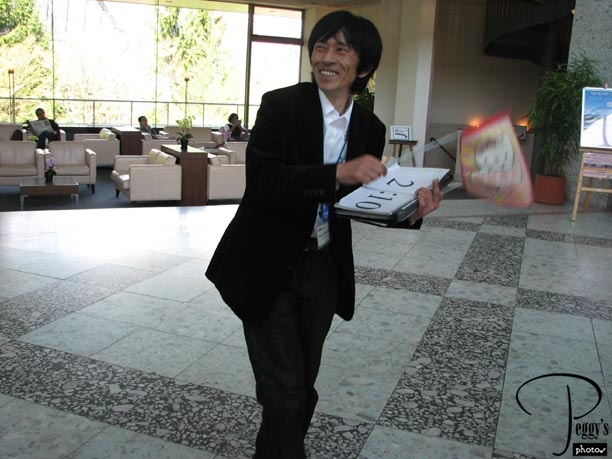
This photo was taken later in the tour, but I’ll introduce you now to our very good guide. He told us to call him by his middle name: Fish.

Our Tour Guide
To Mt. Fuji
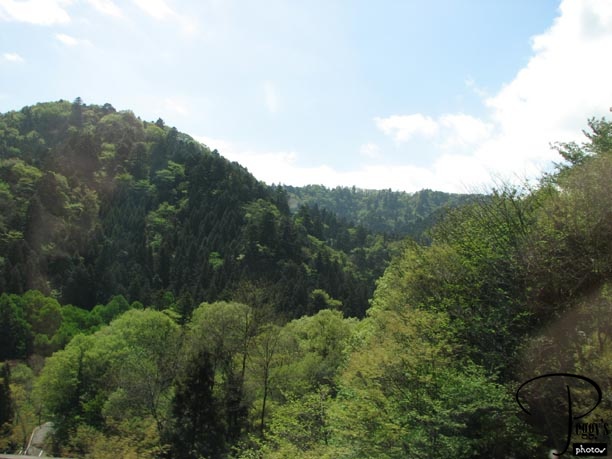
We took off from Tokyo in a southwest direction to Mt. Fuji. Some of the very green hills we drove by.

To Mt. Fuji

To Mt. Fuji
To Mt. Fuji
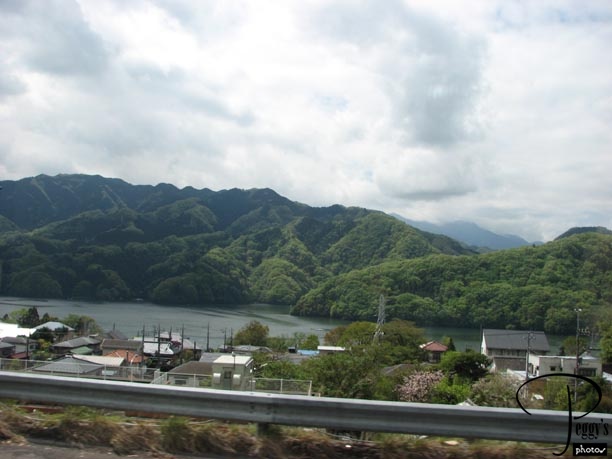
More houses, a lake, and green hills.

To Mt. Fuji
To Mt. Fuji
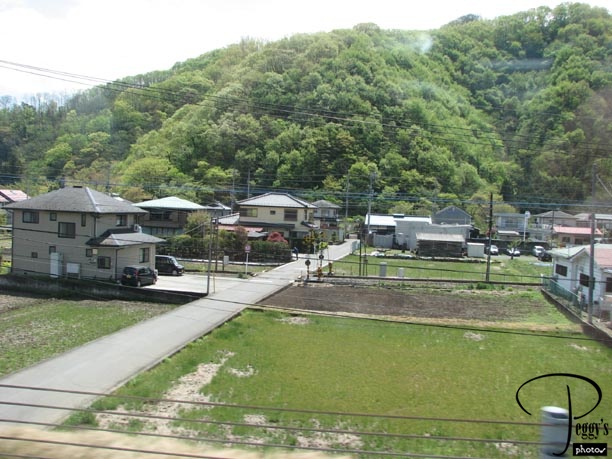
Housing development.

To Mt. Fuji
Mt. Fuji
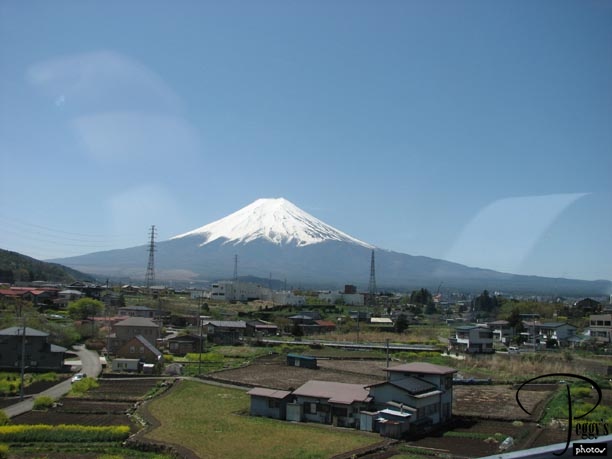
Our first view of Mt. Fuji. Fish told us that it is a rare day when Mt. Fuji is this clear. This was a wow moment!

Mt. Fuji
Mt. Fuji
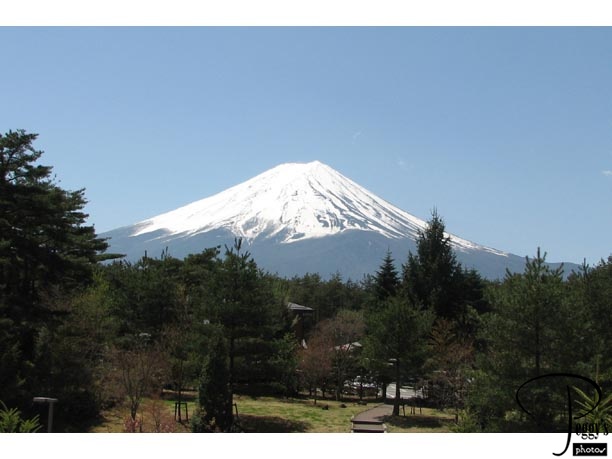
Photo of Mt. Fuji taken from the Mt. Fuji Visitor’s Center. It took us about 1 1/2 hours to arrive here from Tokyo. Mt. Fuji is 12,390 feet (3776 meters) high and is Japan’s highest mountain. It has been dormant since 1707, first erupting about 8,000–10,000 years ago.

Mt. Fuji
Mt. Fuji
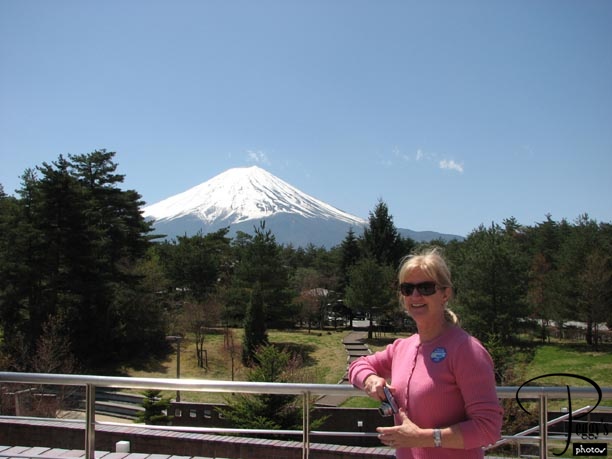
A photo of Lynn taken at the Mt. Fuji Visitor’s Center.

Mt. Fuji
Mt. Fuji Visitor’s Center
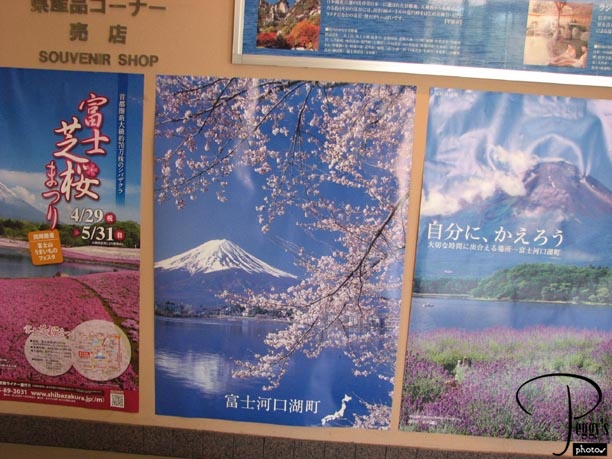
Some of the posters of Mt. Fuji at the Visitor’s Center.

Mt. Fuji Visitor’s Center
Mt. Fuji Visitor’s Center
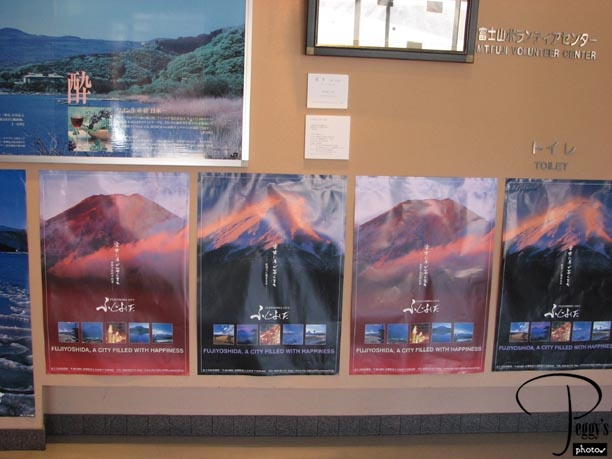
And some more.

Mt. Fuji Visitor’s Center
Mt. Fuji Art
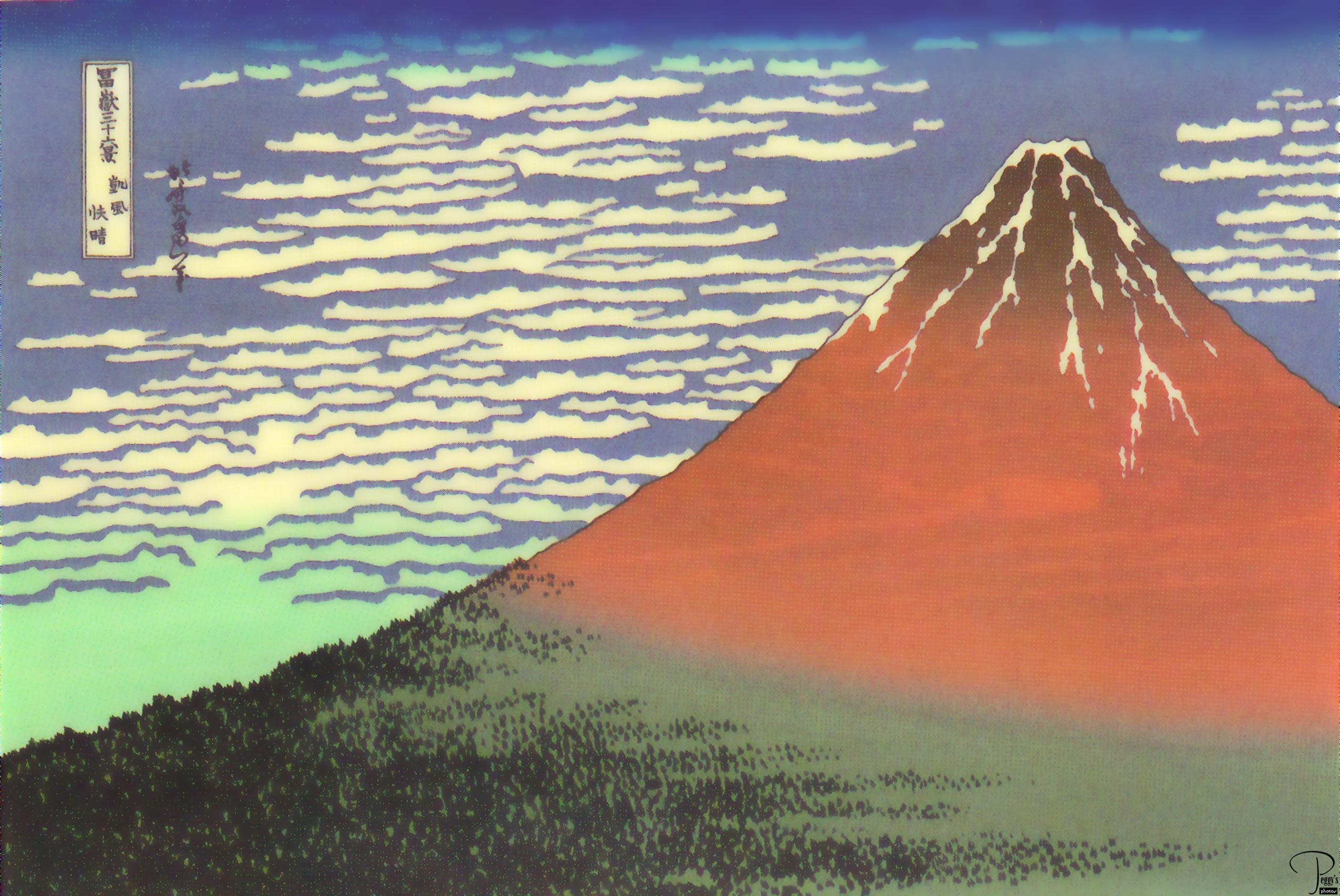
Many artists have portrayed Mt. Fuji in their art work. One artist is Katsushika Hokusai (1760–1849). At the Visitor’s Center, I found postcards of two of his 19th–century woodcuts, two of the most famous Mt. Fuji works. This one is called “Fuji from the Foot.”

Mt. Fuji Art
Mt. Fuji Art
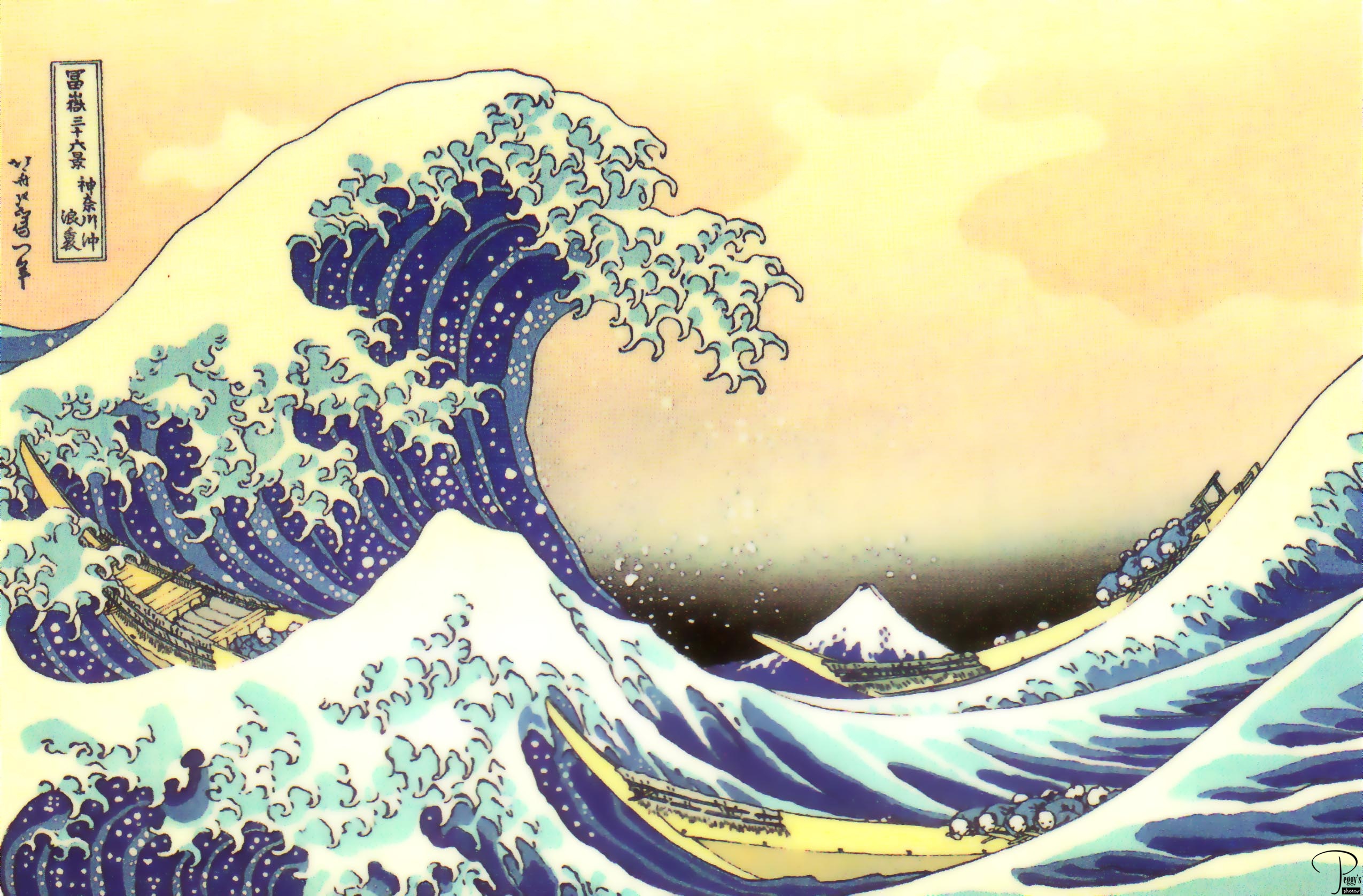
This one (by Hokusai) is called either “Beneath the Wave off Kanagawa” (the wave being a tsunami that had hit this area) or “The Great Wave.” Various titles seem to be given to the same work.

Mt. Fuji Art
Mt. Fuji Art
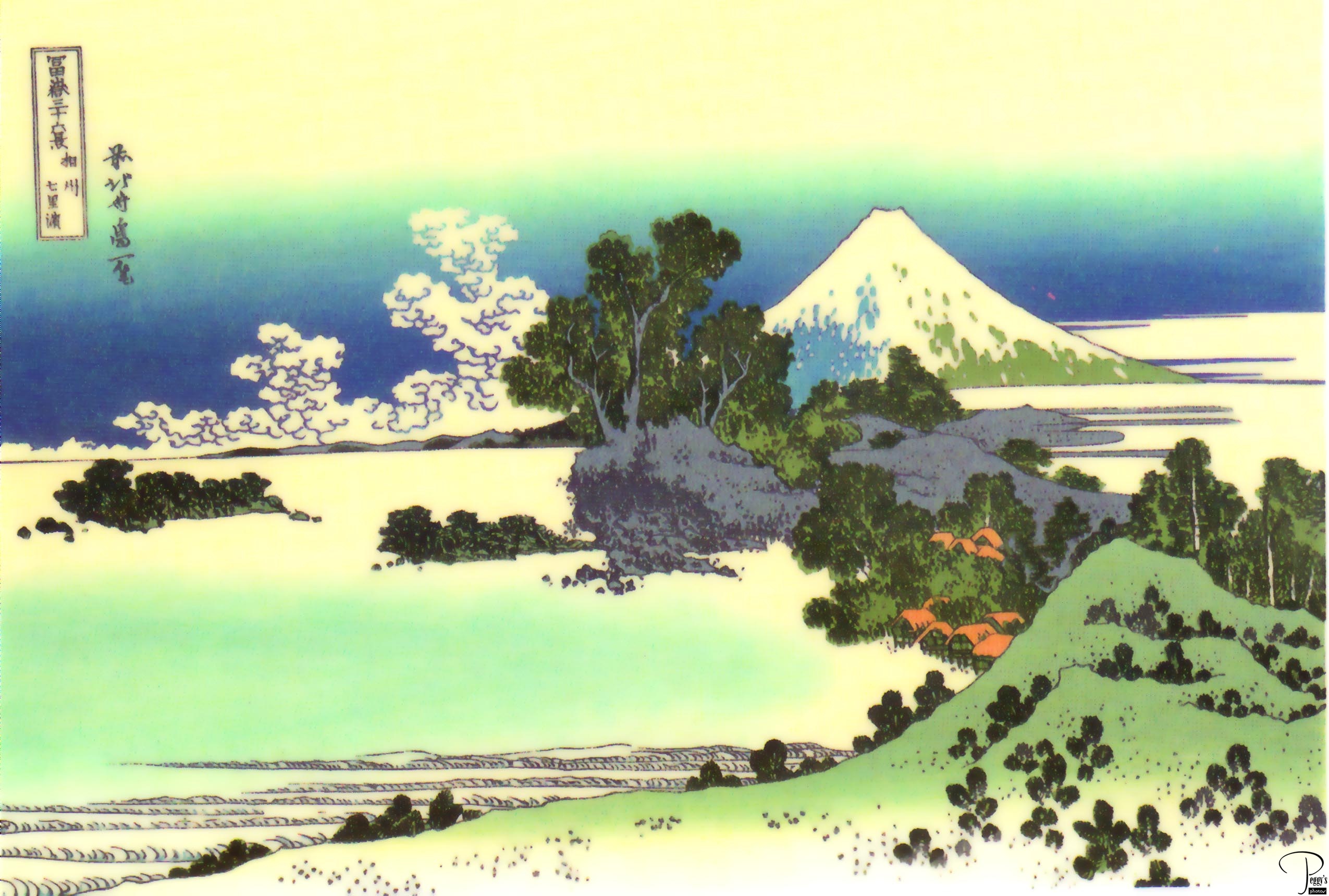
Another artist known for his 19th century Mt. Fuji woodcuts is Hiroshige Ando (1797–1858). This work is “Mt. Fuji from Schichirigaliama.” This was also one of the postcards that I bought.

Mt. Fuji Art
Mt. Fuji Art
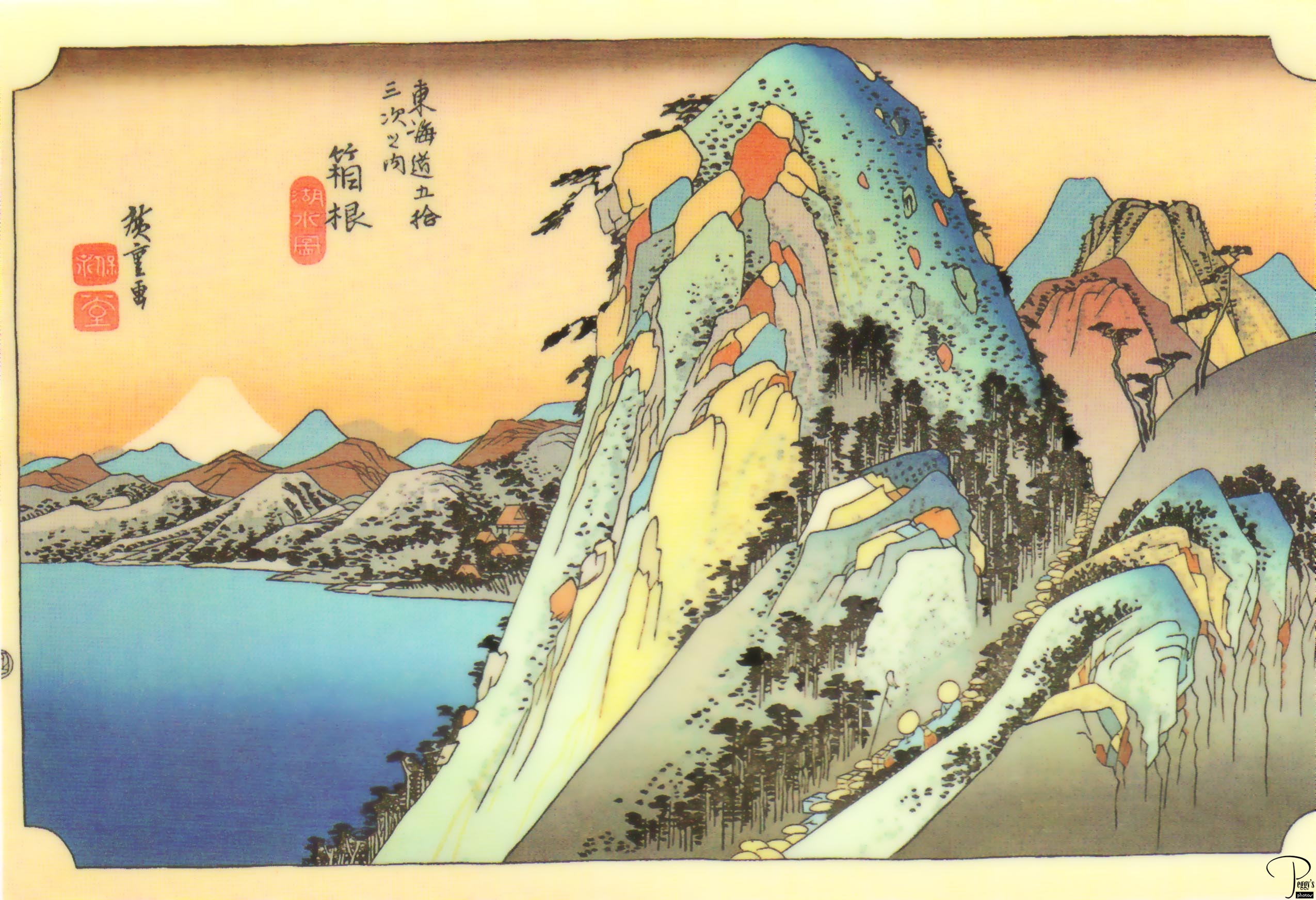
Also, from a postcard and also by Hokusai, called “Hakome Pass.” On the Internet, you can find many more works by these artists and also many beautiful works by other Japanese artists.

Mt. Fuji Art
To Mt. Fuji
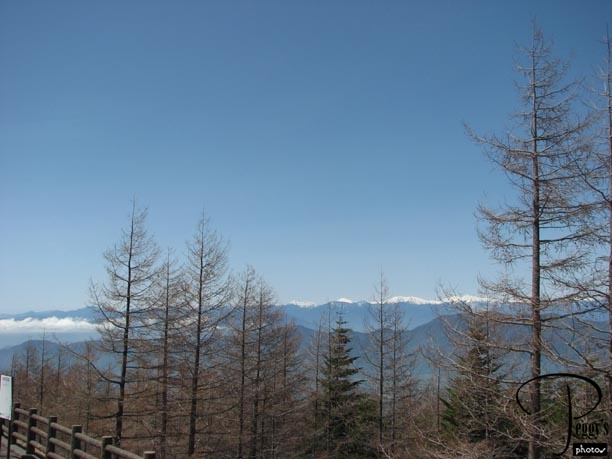
It took us about 30–40 minutes to drive from the Visitor’s Center to Mt. Fuji’s 5th Station. We passed what Fish called the “Japanese Alps.”

To Mt. Fuji
To Mt. Fuji
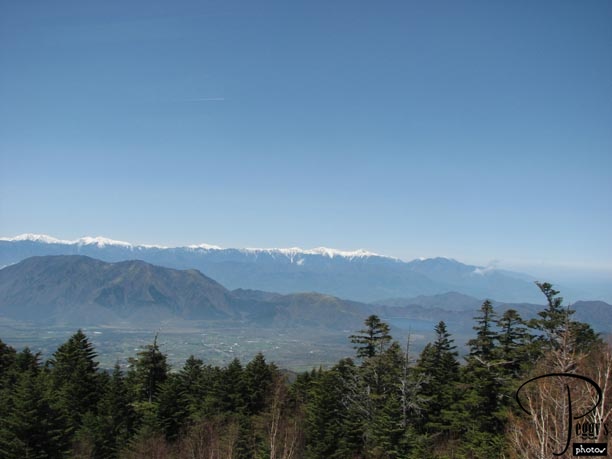
More of the Japanese Alps.

To Mt. Fuji
At Mt. Fuji’s 5th Station
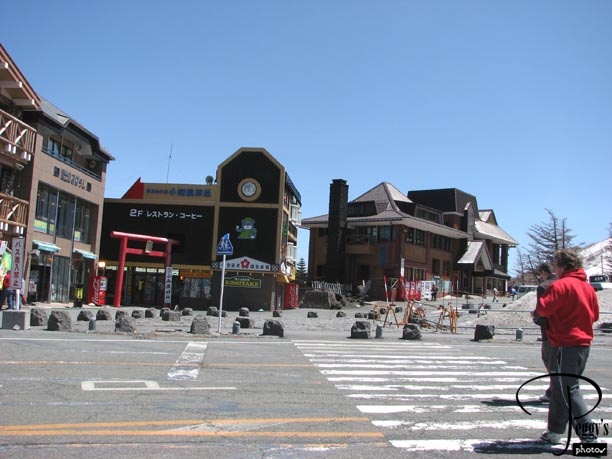
Photo: At Mt. Fuji’s 5th Station––I liked the Japanese Alpine architecture of these buildings. The weather was chilly with wonderful mountain air. To get to the 10th Station, the highest station, you need to climb up the mountain. It is hard work and takes about 8 hours to reach the top, but only about 5 1/2 hours to get back down to the 5th station. There are huts at all the stations that you can rest or sleep overnight in. Climbing Mt. Fuji is only allowed in the months of July and August. Up to 100 years ago, Mt. Fuji was considered so sacred that only priests and pilgrims were allowed to climb it. Women weren’t allowed to climb until 1872. Fish told us it an obligation of being a Japanese to climb Mt. Fuji at least once. He had climbed it twice, though he said that he was really dumb to do it a second time.

At Mt. Fuji’s 5th Station
At Mt. Fuji’s 5th Station
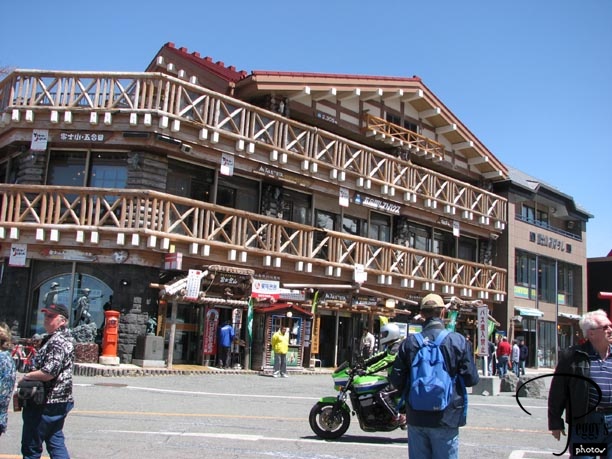
There was a big souvenir store in this building. We were given coupons to pick up a free gift––a lucky little bell.

At Mt. Fuji’s 5th Station
At Mt. Fuji’s 5th Station
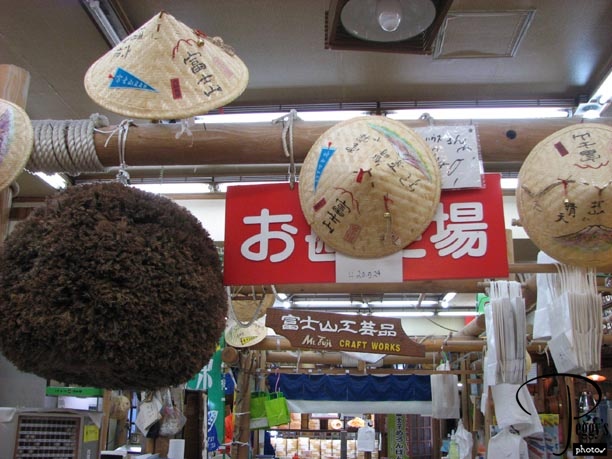
The souvenirs.

At Mt. Fuji’s 5th Station
At Mt. Fuji’s 5th Station
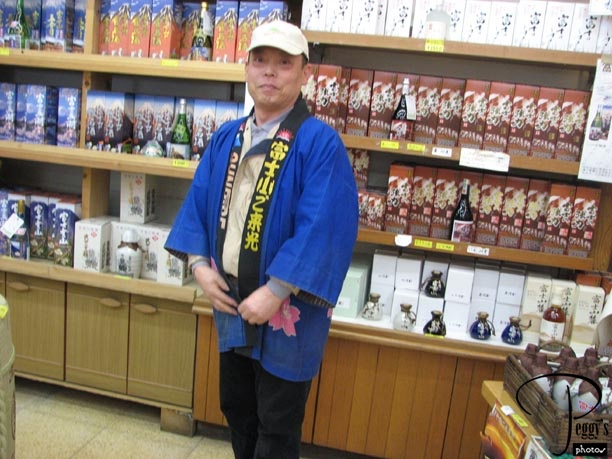
This was the only store anywhere I was in Japan where I found small souvenir bottles of saki, what I had planned to buy as gifts. I bought four little bottles. This salesman wanted to take my photo, but I told him that I preferred to take his instead.

At Mt. Fuji’s 5th Station
At Mt. Fuji’s 5th Station
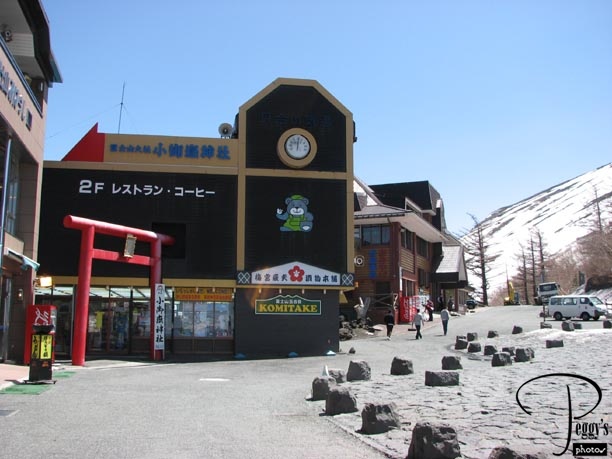
Close–up of one of the buildings.

At Mt. Fuji’s 5th Station
At Mt. Fuji’s 5th Station
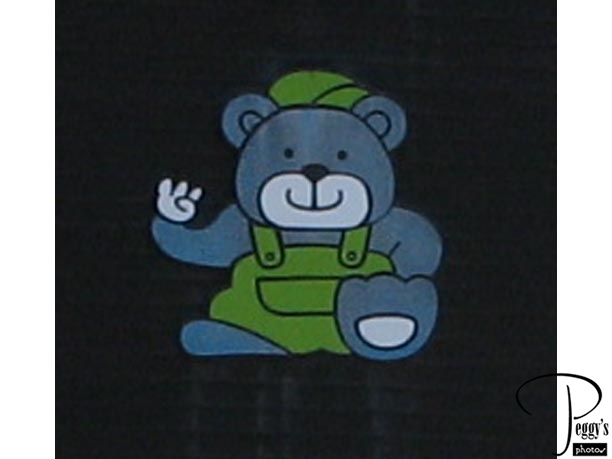
Close–up of the painting on this building.

At Mt. Fuji’s 5th Station
At Mt. Fuji’s 5th Station
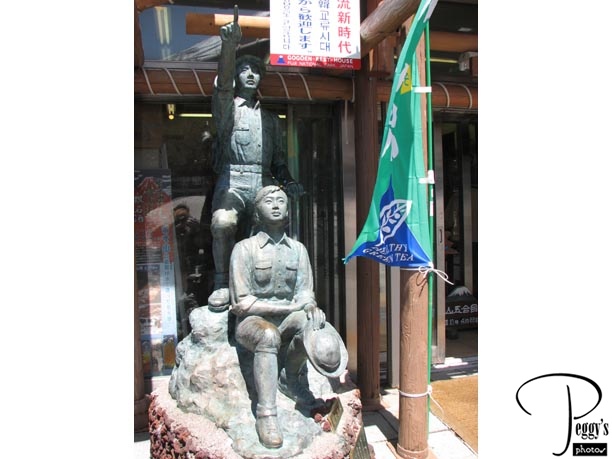
There were a number of statues in this area. A Boy Scout?

At Mt. Fuji’s 5th Station
At Mt. Fuji’s 5th Station
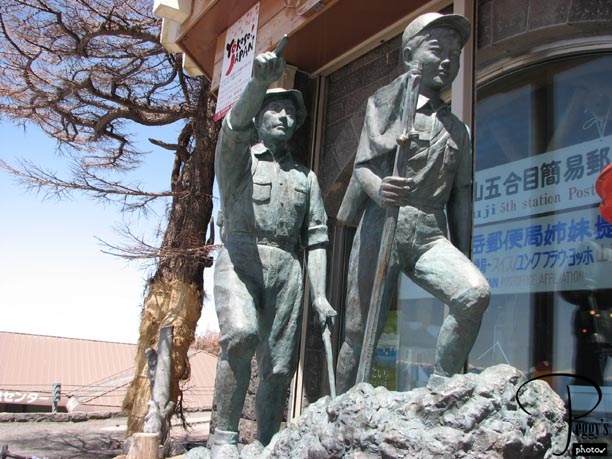
More Boy Scouts?

At Mt. Fuji’s 5th Station
At Mt. Fuji’s 5th Station
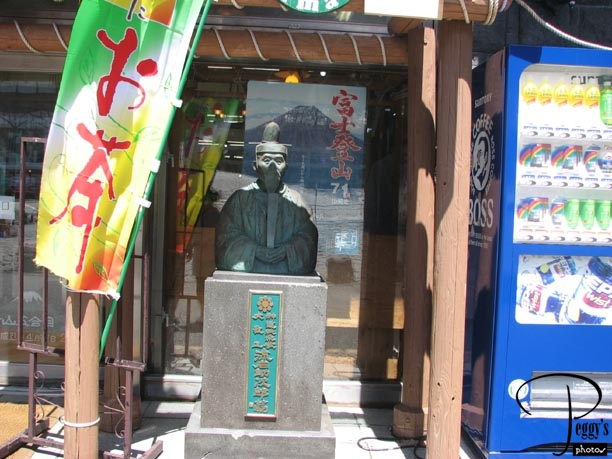
A Chinese man?

At Mt. Fuji’s 5th Station
At Mt. Fuji’s 5th Station
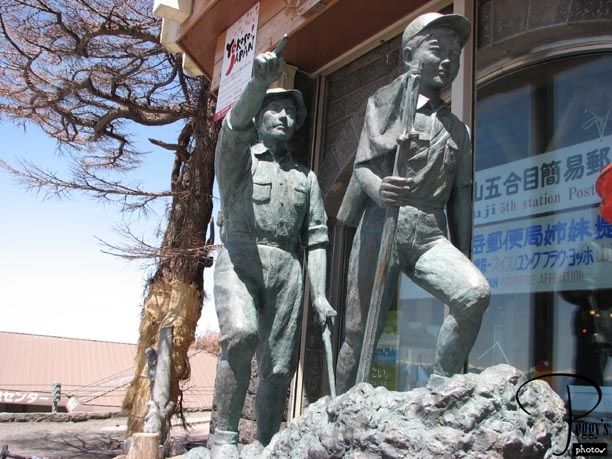
A Chinese worker?

At Mt. Fuji’s 5th Station
At Mt. Fuji’s 5th Station
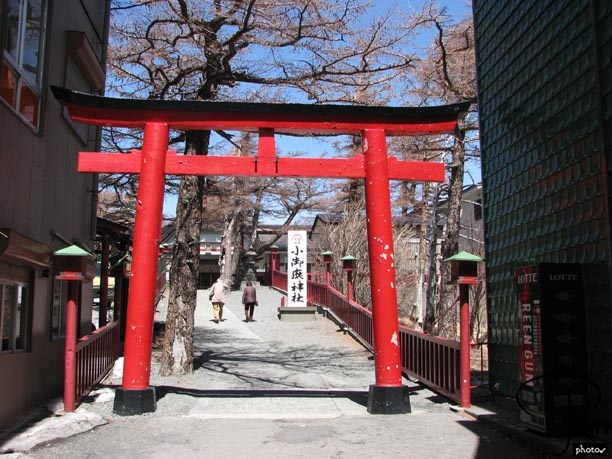
Up a small incline was a Shinto temple. Photo of its torii.

At Mt. Fuji’s 5th Station
At Mt. Fuji’s 5th Station
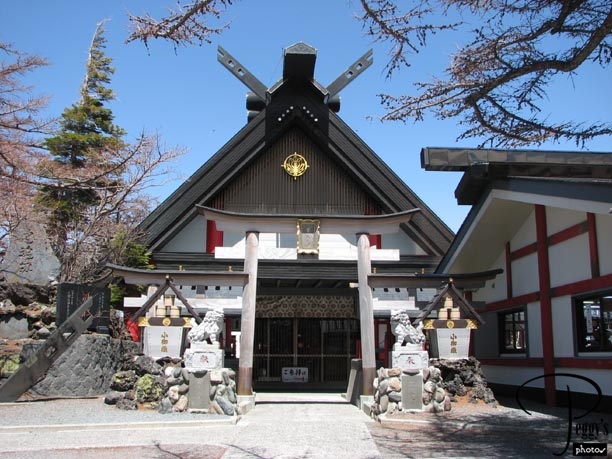
An Alpine–style Shinto shrine.

At Mt. Fuji’s 5th Station
At Mt. Fuji’s 5th Station
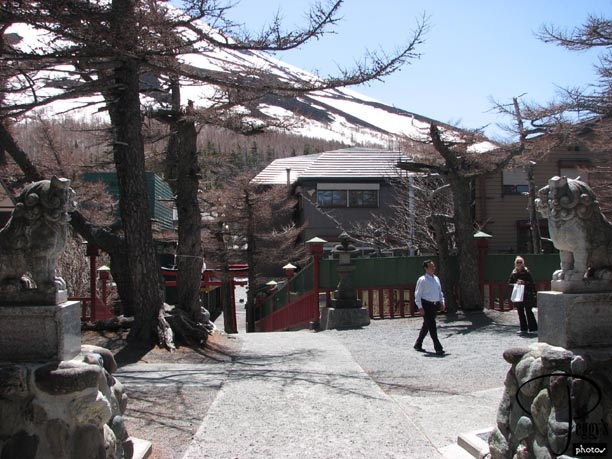
Looking backward. You can see the two dogs indicating a Shinto shrine on either side in the front of the photo.

At Mt. Fuji’s 5th Station
At Mt. Fuji’s 5th Station
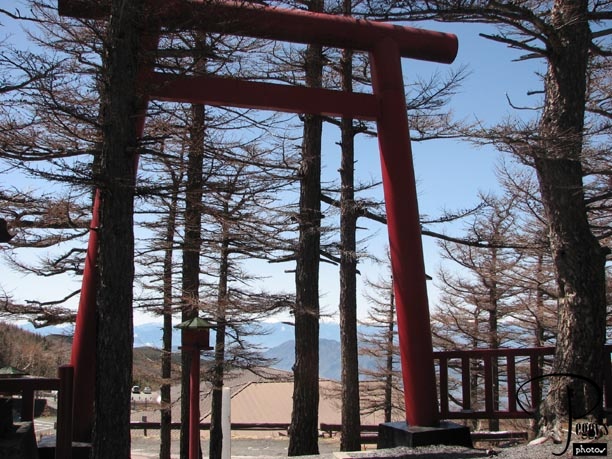
A view through the torii.

At Mt. Fuji’s 5th Station
At Mt. Fuji’s 5th Station

Snow at Mt. Fuji.

At Mt. Fuji’s 5th Station
At Mt. Fuji’s 5th Station
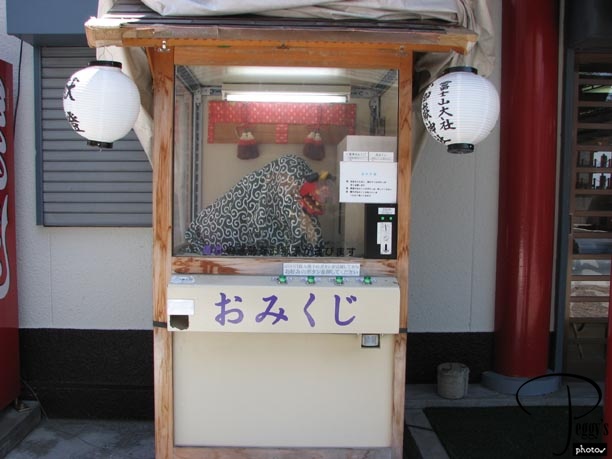
A Chinese dragon resides behind the window.

At Mt. Fuji’s 5th Station
At Mt. Fuji’s 5th Station
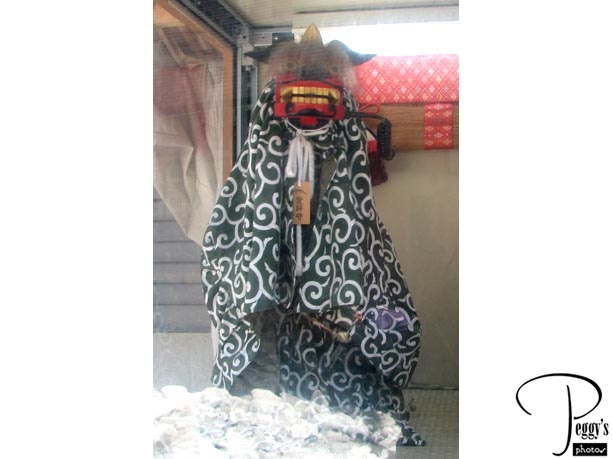
The dragon looked straight at me.

At Mt. Fuji’s 5th Station
At Mt. Fuji’s 5th Station
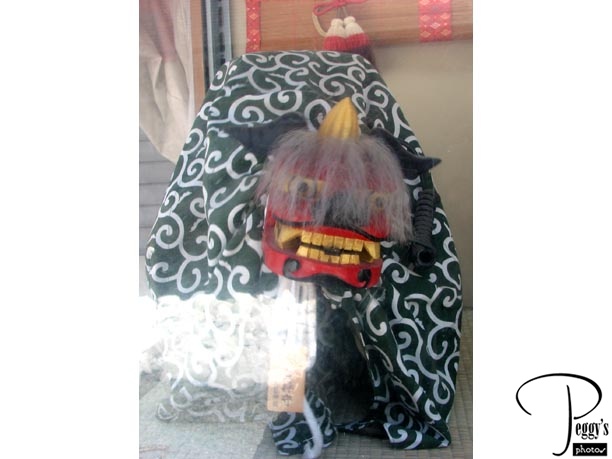
Then moved.

At Mt. Fuji’s 5th Station
At Mt. Fuji’s 5th Station
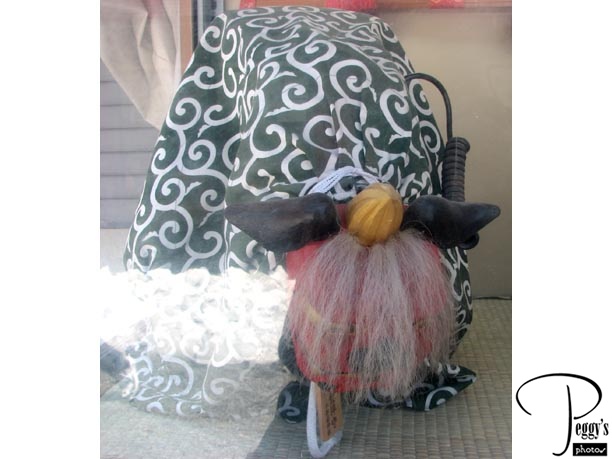
Then bowed.

At Mt. Fuji’s 5th Station
Lunch
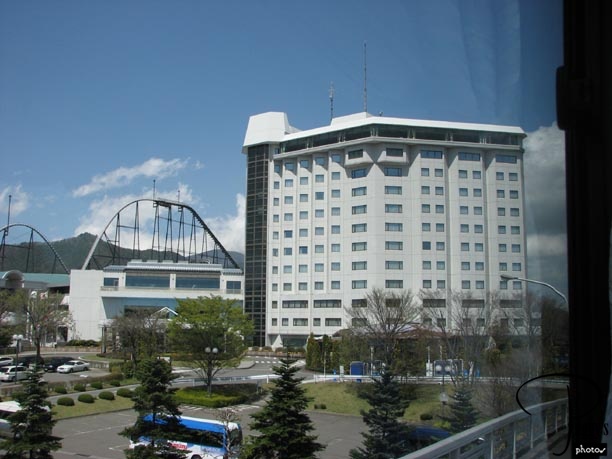
We then drove down the mountain to this hotel where we would have lunch. There was a large amusement park behind the hotel.

Lunch
Lunch
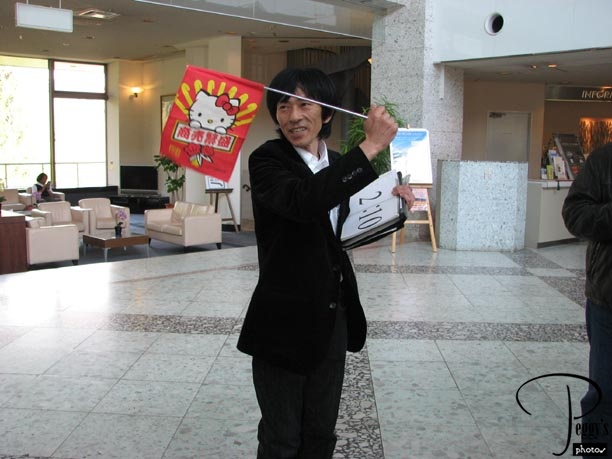
Fish telling us we should follow him.

Lunch
Lunch
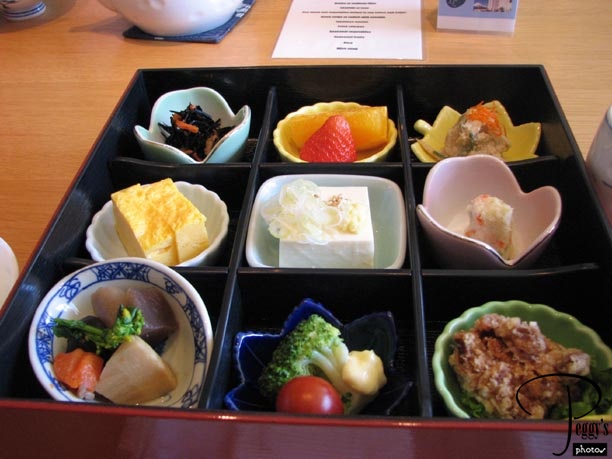
Originally, I didn’t sign up for a Japanese lunch, but Lynn did and I thought it would be nice to eat together, so I asked if I could change my mind. But Lynn’s group went to a different restaurant and I ended up with this Japanese lunch (1680 yen). I didn’t see the description of its items until I looked at this photo myself. From what I can read from the description and from what I can remember: first row (from the front)––left, mushrooms; middle, seasonal vegetables; right, chicken and I think soybeans; second row––left, Japanese omelet?; middle, undetermined; right, rice; third row––dried citrus and radishes with sesame; middle, seasonal fruits; right, seaweed and vegetables boiled in vinegar and something else. We were also served miso soup and green tea. I didn’t eat the undetermined, the Japanese omelet, and the mushrooms. I tried the seaweed and didn’t care for it, but I liked the seasonal vegetables and fruit, the rice, the dried citrus and radishes, the chicken, the green tea, and the miso soup, so there was enough for me to eat. I ate my lunch with two young travelers: a girl from England and a guy from Australia. They were staying at hostels.

Lunch
Mt. Fuji
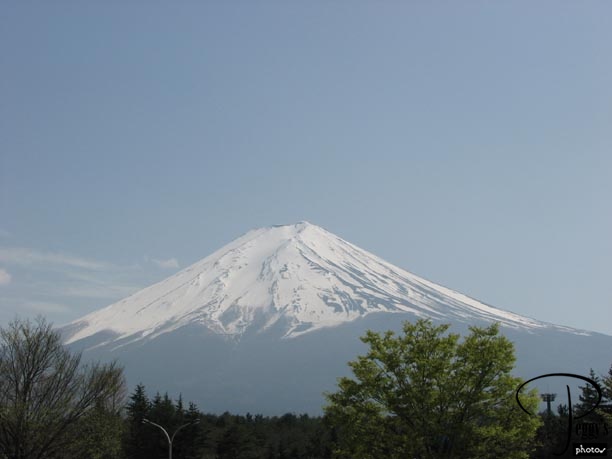
View of Mt. Fuji from the hotel.

Mt. Fuji
To Lake Ashi
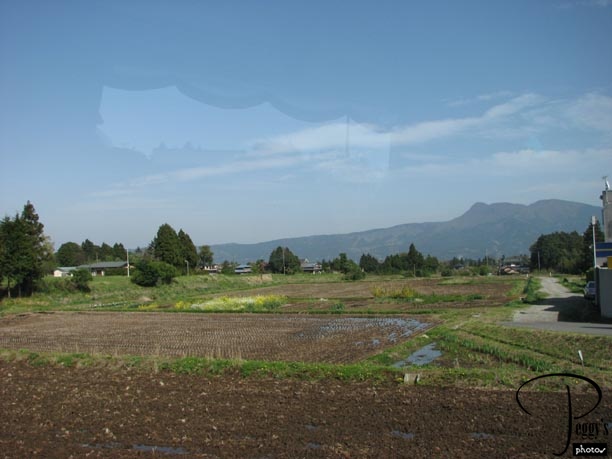
Seen on the road to Lake Ashi. This was another long drive.

To Lake Ashi
To Lake Ashi
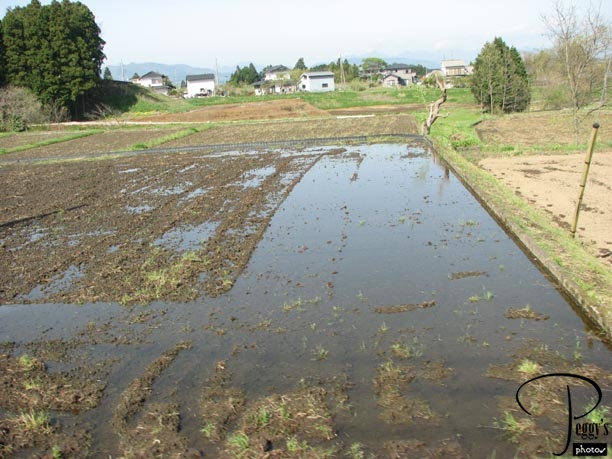
A rice paddy.

To Lake Ashi
To Lake Ashi
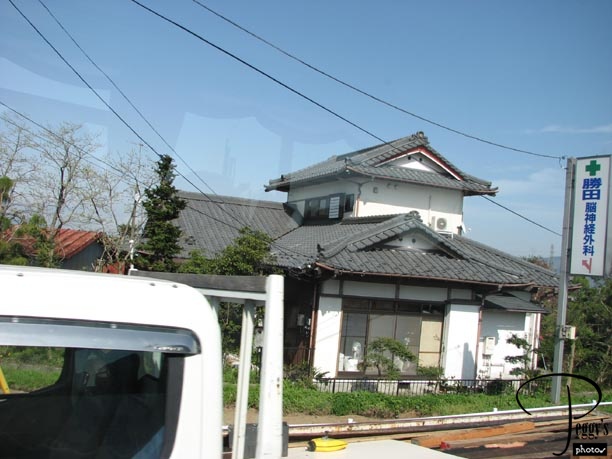
A Japanese house.

To Lake Ashi
To Lake Ashi
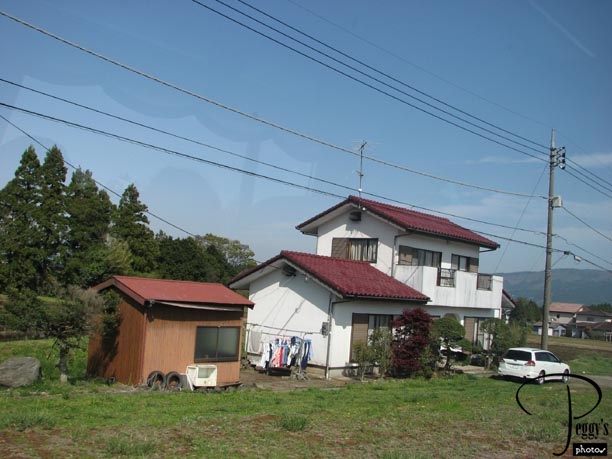
Another house.

To Lake Ashi
To Lake Ashi
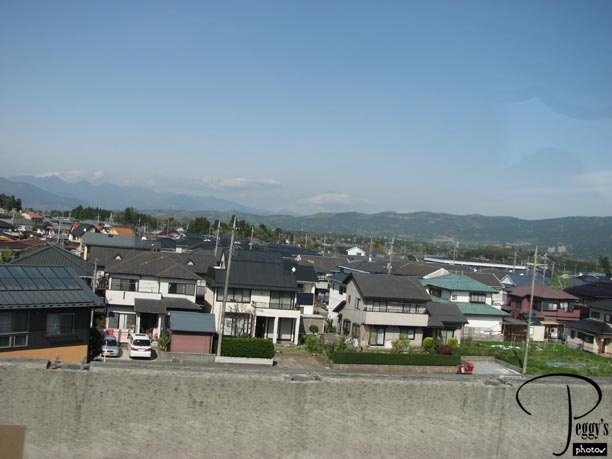
Housing development.

To Lake Ashi
To Lake Ashi
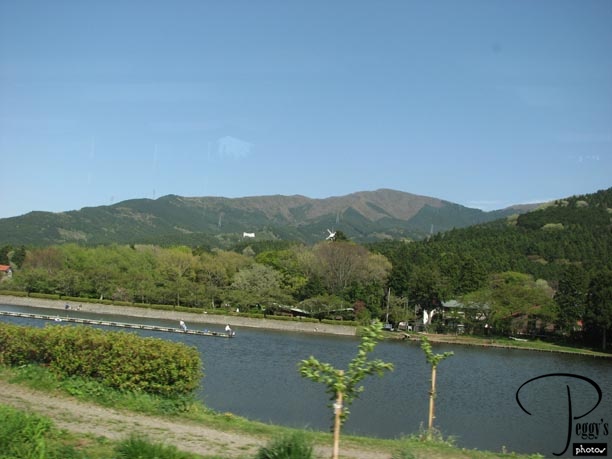
A river.

To Lake Ashi
To Lake Ashi
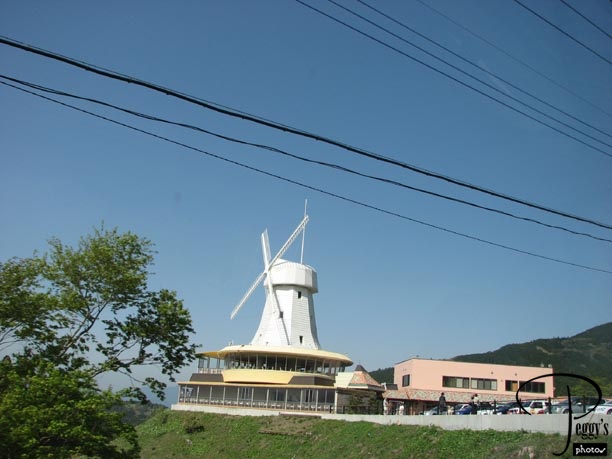
A Japanese windmill. Actually, a windmill on top of a restaurant.

To Lake Ashi
Lake Ashi
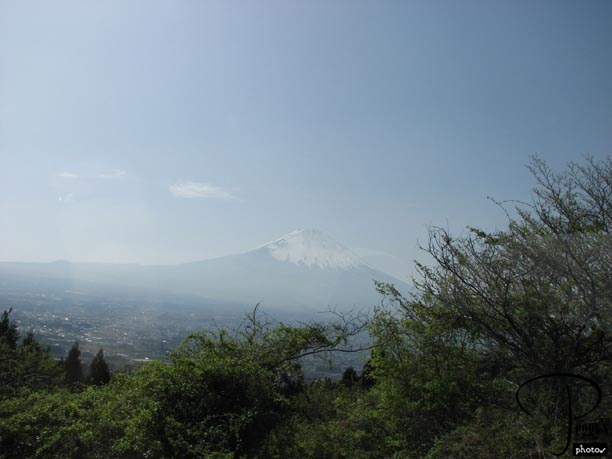
View of Mt. Fuji from Lake Ashi.

Lake Ashi
Lake Ashi

We took this boat for a short boat cruise on Lake Ashi to Hakone at the foot of Mt. Fuji. We are in the Fuji–Hakone–Izu National Park.

Lake Ashi
Lake Ashi
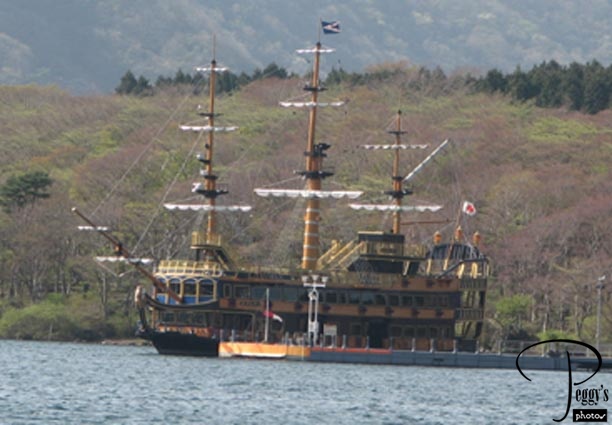
We passed this pirate boat.

Lake Ashi
Lake Ashi
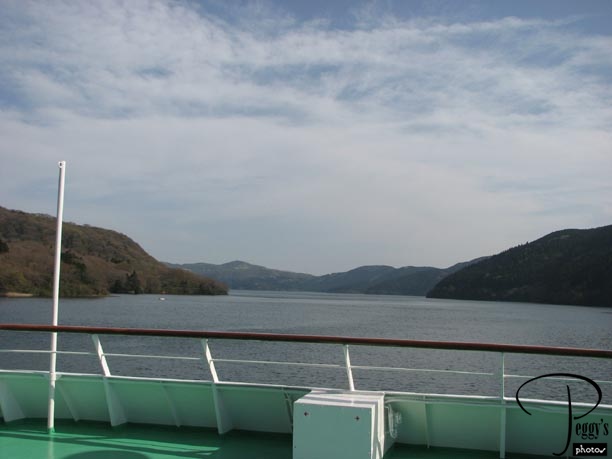
On Lake Ashi.

Lake Ashi
Lake Ashi

On Lake Ashi.

Lake Ashi
Lake Ashi
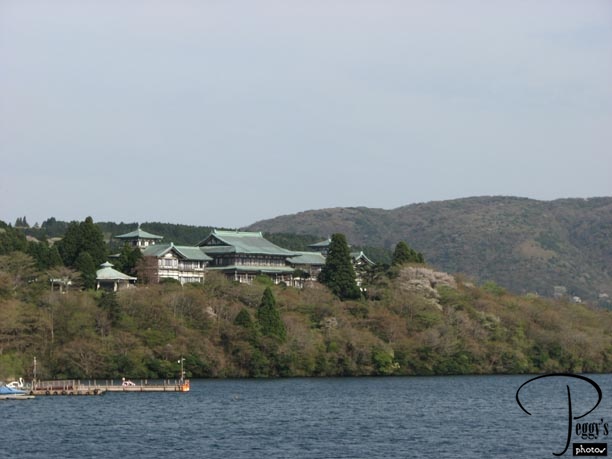
A resort. Lake Ashi and Hakone are summer resorts for people from Tokyo.

Lake Ashi
Lake Ashi
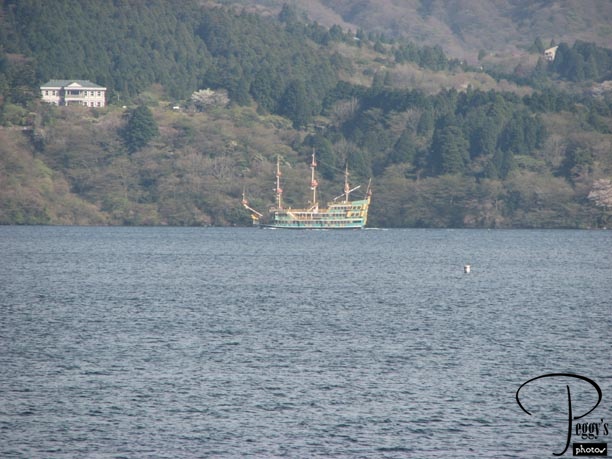
Oh dear, another pirate boat!

Lake Ashi
Lake Ashi
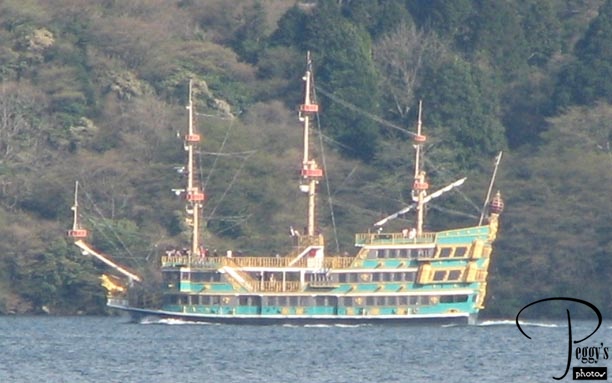
Close–up of the pirate boat. The pirate boats are used to take tourists around the lake.

Lake Ashi
Lake Ashi
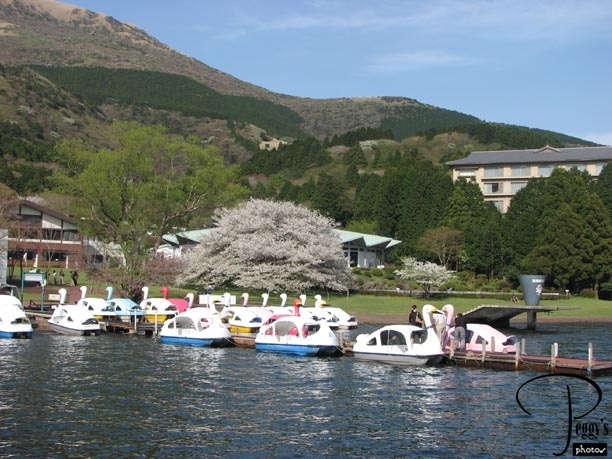
Starting to dock. Photo: This is certainly “putting all their ducks in a row.”

Lake Ashi
Hakone-en

Entrance to the Hakone–en Lake Side Park.

Hakone-en
Hakone-en
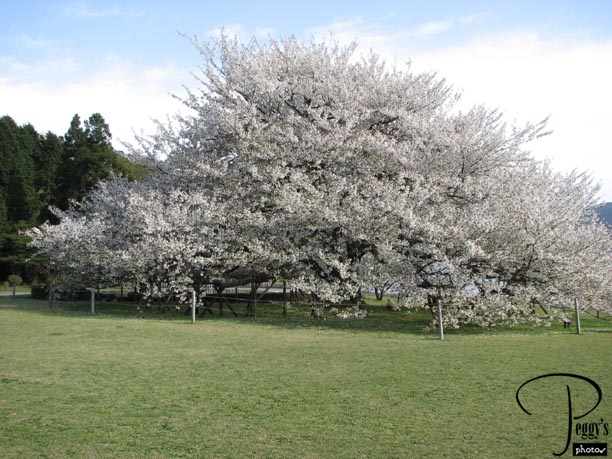
A 150–year–old cherry tree in the park.

Hakone-en
Hakone-en
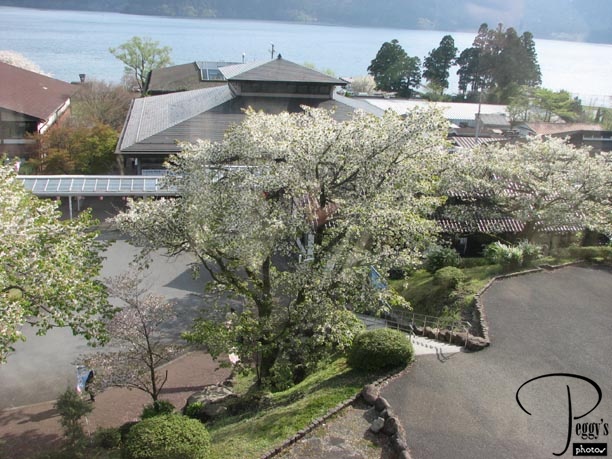
More cherry trees.

Hakone-en
Mt. Kamagatake
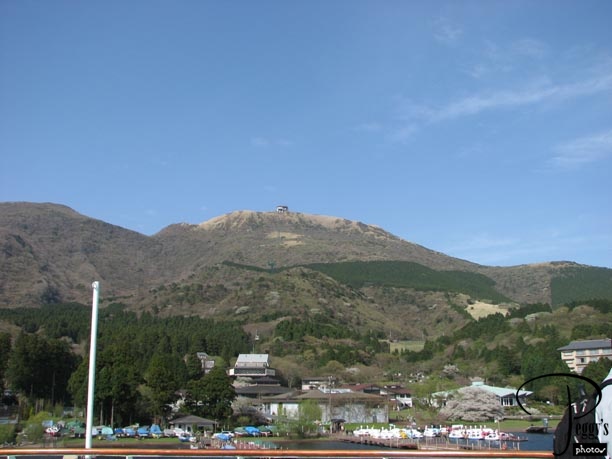
We took a cable car to the top of Mt. Kamagatake. You can make out the cable car station on top of the hill in the photo. I put my photos of our cable car ride up the mountain on a slide show on this website: Go to Slide Shows, Asia, Japan, “Mt. Kamagatake (Hakone–en): Cable Car Ride.” There are more photos of Mt. Fuji on the slide show.

Mt. Kamagatake
Mt. Kamagatake
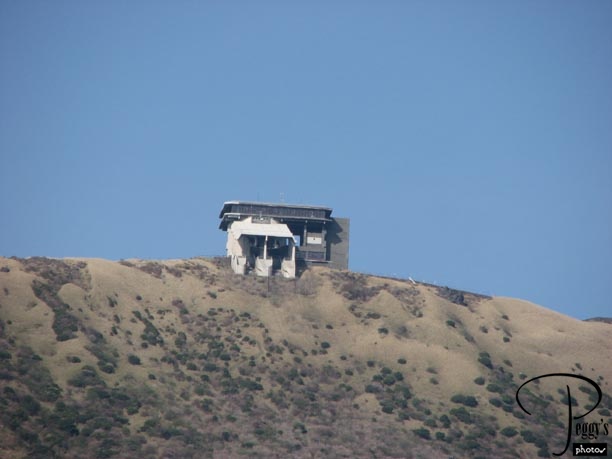
Close–up of the cable car station on top of Mt. Kamagatake.

Mt. Kamagatake
Hakone-en
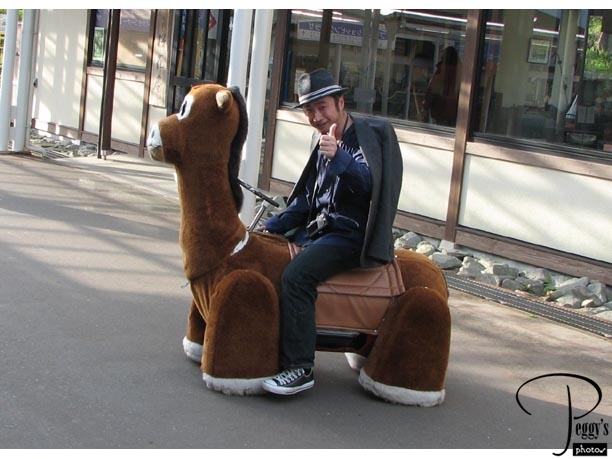
After our cable car ride, we had time to do some shopping before we took a 30–minute drive to catch the bullet train back to Tokyo. This guy was having fun riding around the area on this children’s toy.

Hakone-en
Shinkansen (Bullet Train) at Odawara Station
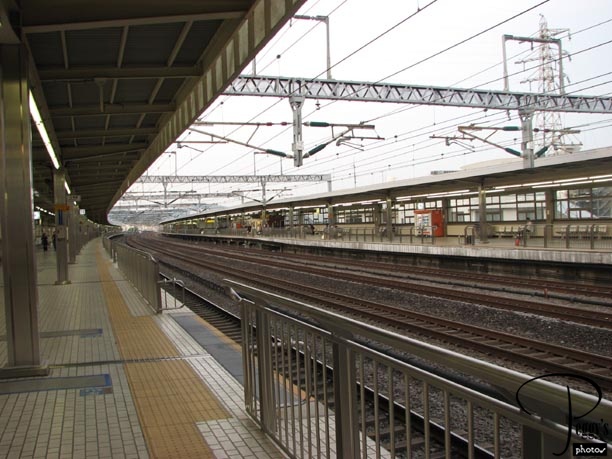
The bullet trains in Japan are called Shinkansen. This photo is of (I believe) the Odawara Station. Notice that there are four tracks here. The trains stopping at this station use the outside tracks. The two inside tracks are used by the trains not stopping.

Shinkansen (Bullet Train) at Odawara Station
Shinkansen (Bullet Train) at Odawara Station
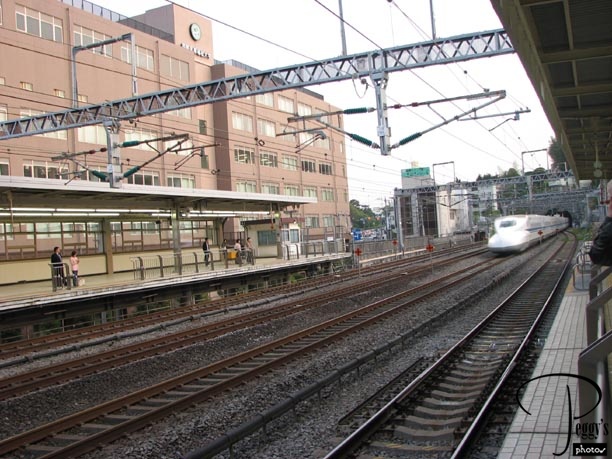
The bullet trains run quite often. The trains not stopping whizzed by so fast that it took me quite a number of tries to get this photo. They were so fast that I had to have not only my camera on, but I also had to have my eye up to the viewfinder and my finger on the shutter button.

Shinkansen (Bullet Train) at Odawara Station
Shinkansen (Bullet Train) at Odawara Station
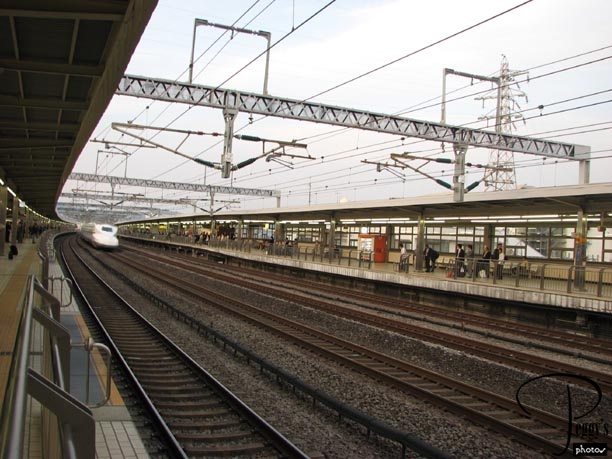
And quite a number of tries to get this photo. After another number of tries, I got two of the trains whizzing by on movie clips. I have put them on this website: Go to Movies, Asia, Japan, “Japanese Shinkansen (Bullet Train)–1 and –2.” It took 14 seconds from the time we saw a train coming through a tunnel to the time we saw that train entering the tunnel at the other side of the station––and that is for a train having 14 cars and two engines.

Shinkansen (Bullet Train) at Odawara Station
Shinkansen (Bullet Train) at Odawara Station
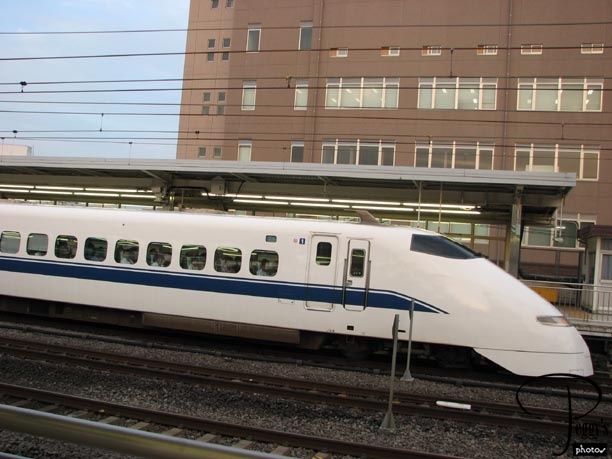
This train is stopping at Odawara Station. I think it is the N700 model, which takes curves at 167 mph (269 kph) and straightaways at 186 mph (299 kph). The Eurorail high–speed train from Paris to London also travels at 186 mph. In 2011, Japan will put into service the E5 model with a speed of 220 mph (320 kph), and in the 2020s, it plans to put into service a 360 mph (579 kph) maglev train.

Shinkansen (Bullet Train) at Odawara Station
Shinkansen (Bullet Train) at Odawara Station
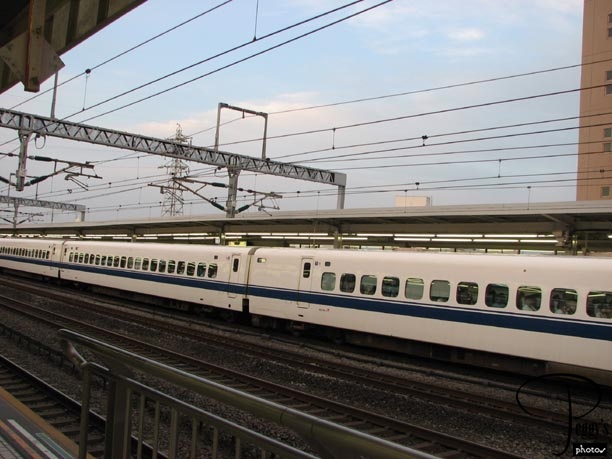
Our train to Tokyo ran at a top speed of 186 mph. Whenever another bullet train passed us, there was a big poof. Then it only took 3 seconds for that train to pass us (remember that we are also moving). This discussion brings up the question of what type of high–speed train will be on the drawing board in the U.S. for the near future: regular or maglev? Will we have a commuter bullet train like that of Japan or fewer trains as Europe has: Between the hours of 7–10 a.m., I counted 36 trains going from Tokyo to Osaka but only 4 trains going from Paris to London. You need to make reservations to take the European high–speed trains unless you take a chance there is still an empty seat if you buy your ticket at the station. Japan has three classes of bullet trains––the fastest between cities is the Nozomi––2 1/2 hours to Osaka from Tokyo (a distance of 343 miles––552.6 km), only making important stops; the Hekari, 3 hours making more frequent stops; and the Kodama, stopping at all stations. Some of the runs are reserved and some are “just show up at the station.” The fares from Tokyo to Osaka run from 4730 yen to 8510 yen for weekdays (or from $47.30 to $85.10). We had a very smooth bullet train ride to Tokyo, except for being a bit startled by all the poofs.

Shinkansen (Bullet Train) at Odawara Station
Decks’ Daiba Little Hong Kong
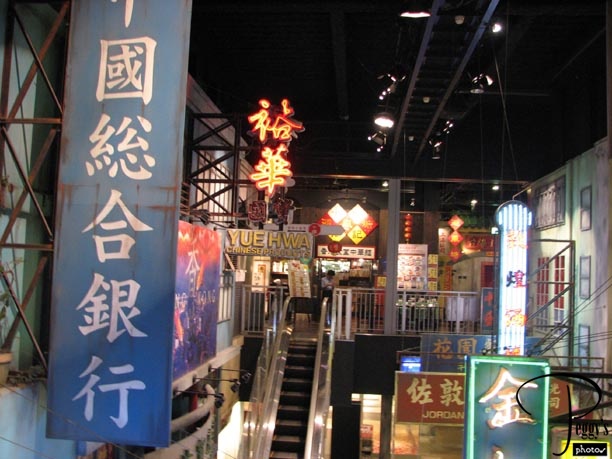
After taking the subway from Tokyo Station to Shimbashi Station to catch the monorail back to my hotel, I walked over to Decks, another multistory mall of shops and restaurants past Aqua City. I walked through two floors there called Daiba Little Hong Kong, designed to simulate a more or less unsavory area of Hong Kong in the mid–20th century. There are mostly restaurants in Little Hong Kong. I have put the photos I took here on a slide show on this website: Go to Slide Shows, Asia, Japan, “Tokyo: Little Hong Kong.”

Decks’ Daiba Little Hong Kong
Dinner at Decks
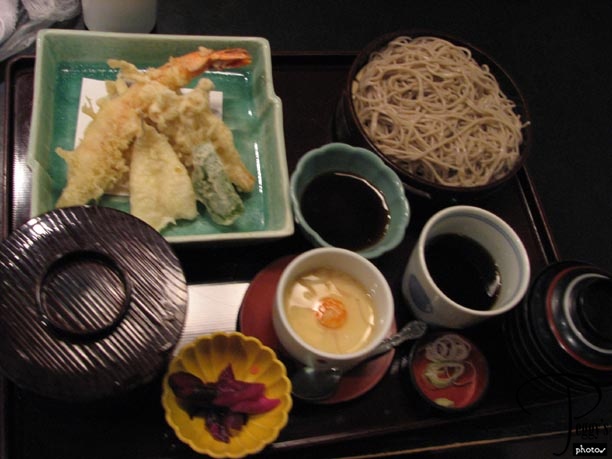
I was going to eat dinner in Little Hong Kong, but I couldn’t find any food there that I could recognize. So I went down a couple of floors in Decks and walked around. I found a restaurant serving tempura shrimp, which I like. Photo––My Japanese dinner: soup, the best Asian soup I have ever had, wish I knew its name; both shrimp and vegetable tempura––both very good; pickled radishes––very good; cold noodles––I didn’t like them; rice––of course; and something in the middle that I also didn’t like. I drank green tea. Cost: 1880 yen. I walked back to my hotel along Tokyo Bay and all the lights. Another very good day In Japan.

